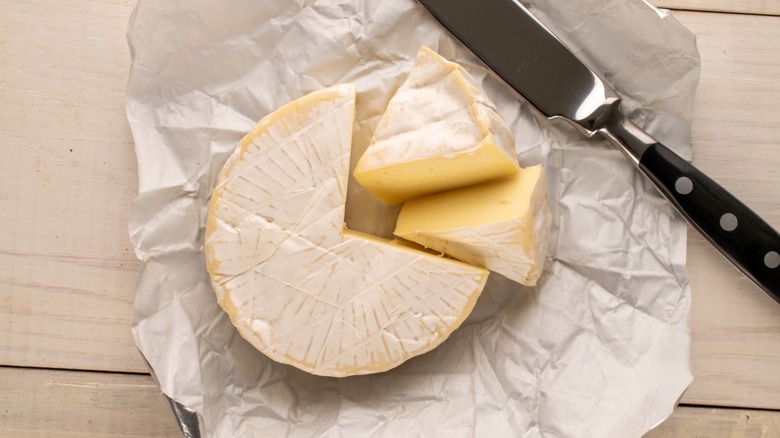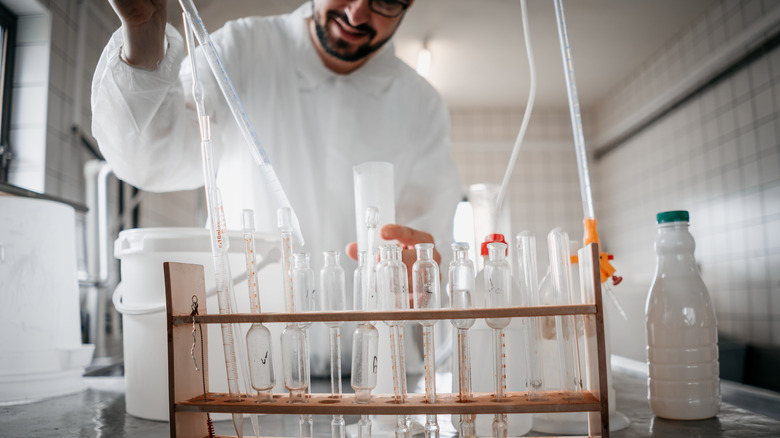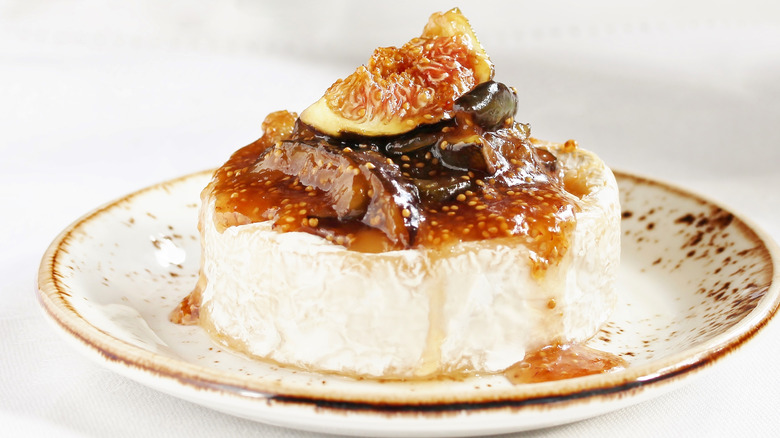Why Brie Cheese Might Become Extinct
As strange as it may seem, cheese's delicious tangy flavors come from a delicate system of living organisms. (Which is part of the science behind the oh so smelly nature of cheese, too.) Starting off with fresh ingredients, cheese is simply milk that's been left out to curdle, slowly solidifying while microbes eat away at it, opening up all the signature flavors that only mold can cultivate. Eating mold might be an odd concept, but it sure is good, and no one ever said love is supposed to make sense.
Different combinations of mold and bacteria yield different cheeses. Brie cheese, for example, is made primarily from one specific strain of mold known as Penicillium camemberti. (Which is where this mild indulgence gets its standard soft white exterior.) While this bacteria is essential to the production of brie, it has one fatal flaw: It can't reproduce on its own, so it has to be cloned every time a new cheese is made.
Brie's reliance on just one strain of bacteria leaves it at risk, as it only takes one disease to wipe out the strain completely, and brie along with it. As if that wasn't enough, the process of cloning Penicillium camemberti is already getting more difficult. After years of cloning this bacteria, it's becoming much harder to recreate as it continues to mutate. All these factors have left brie cheese vulnerable to becoming extinct.
Don't worry, we can still brie happy
While the idea of brie disappearing forever is a tough pill to swallow, nobody panic just yet. This reliance on a sole strain of bacteria creates some concern for its future, but the chance of it happening any time soon is slim. Plus, using Penicillium camemberti isn't the only way to make brie cheese. The reason why this bacteria was chosen for brie in the first place is because it can quickly and easily create a uniform product.
Cheesemakers loved that consistency, but prior to Penicillium camemberti, brie was made with other strains of mold such as Penicillium biforme. Because this is an entirely different strain of mold, the color of brie back then was different, ranging anywhere from orange to blue. So luckily, there are some alternatives to making brie if Penicillium camemberti is wiped out, but consumers might have to be open to embracing some changes in their cheese too.
While brie is in danger of becoming extinct, it's not the only food facing an end. Camembert is another beloved cheese that relies on Penicillium camemberti, so it's also threatened by the potential demise of this bacteria. Many varieties of blue cheese are facing a similar issue, and other foods like apples and bananas are in danger of going extinct too for similar reasons.
The solution to this problem
To avoid a future void of the brie we know and love, introducing some diversity into the Penicillium camemberti strain is essential to ensure it will be able to withstand environmental changes and disease. To do this, scientists have to clone and alter this bacteria's genome, which might result in slightly altered flavors and hues.
Alternatively, we could always go back to the old ways of making brie using other bacteria strains like Penicillium biforme, which does have the ability to reproduce. This way we wouldn't have the same worries we currently do with modern-day brie. This might mean the brie of future times will look orange or blue instead of white, but hey, it will still be brie, and we'll take some slight differences in color over the loss of brie entirely.
The potential of brie extinction's becomes especially pressing as environmental conditions like the climate continue to change. That exposure to unfamiliar circumstances makes bacteria extra vulnerable to dying out. So hopefully a true solution is agreed on soon, so our great-grandchildren can enjoy the same beautiful baked brie with fig jam and vivid cheese spreads we know and love today.


